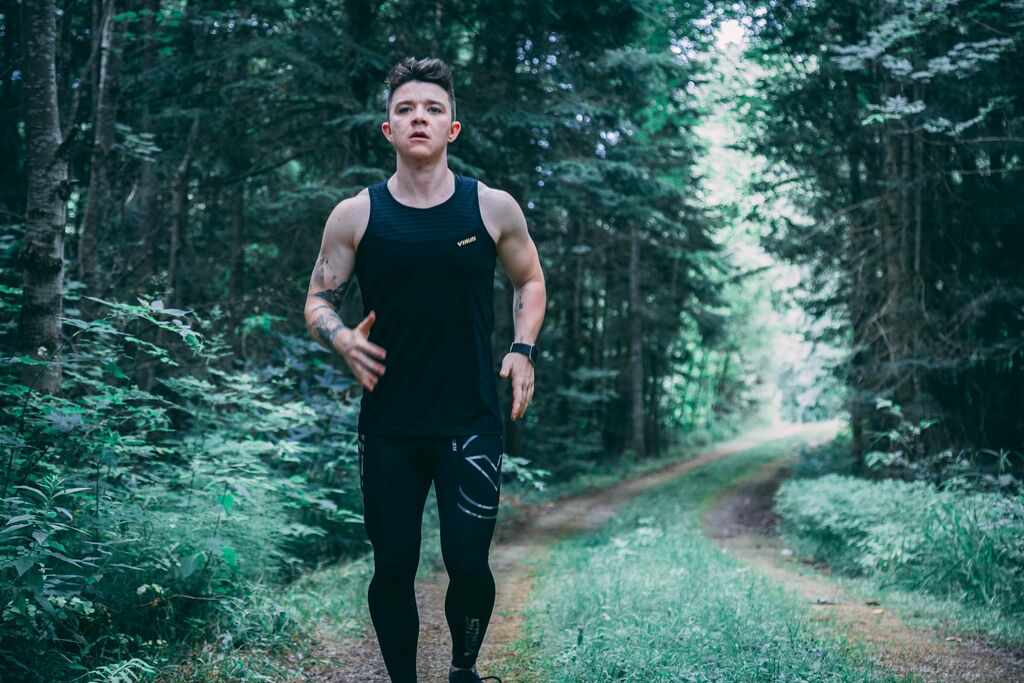The Best Tips For ‘Slow Runners’ to Help Performance

Are you that runner is always get passed by others on the trail or park pavement? Maybe others have called you a jogger or can’t believe that you actually finished a half marathon. Don’t be discouraged because even “slow runners” are real runners.
But there are some tips targeted for slower runners that can help increase their pace, build stamina, and fix the many issues they face.
Who Are Slow Runners?
For starters, the term slow is relative to how a person defines various paces.
A slow runner might be 10-minute mile runner to some, but to a 12-minute mile runner, this is fast.
We also aren’t using slow as a negative word here. All runners at all paces are runners in our eyes. Running slowly is better than not running (or worse—sitting in front of the TV with fast food instead) at all.
Many runners find themselves in the “slow” category at least once. This might be when they are first starting out, coming back from an injury, or a baby. And the list goes on.
We all are passed by a faster runner at a race—unless we are the winner of the event.
For the purpose of this post, we are merely providing the tips and tricks for those “slow runners” who are looking to increase their performance.
Here are the best tips for runners who think they are slow.

Everyone Wants To Be Faster, So Train Smarter
No matter who fast or slow the pace is, most runners want to be faster.
Some believe a 7 or 8-minute mile runner is to be considered fast runners. This just sounds elitist.
Yes, these are really fast times. But that doesn’t mean a 9, 10 and so on minute mile isn’t fast too.
Back of the pack runners can get faster too. All you need to do is train smarter.
This means not merely going for a run. Add structure to your runs and make training plans. Set aside a run a week for a tempo run, one for hills, one for long stance and the rest intervals.
All these types of runs help to increase stamina and endurance. Fartlek, hill repeats, and tempo runs work wonders for speed.
Run The ‘Right’ Part Of The Day
Nothing is better for confidence than crushing a run. But there are many factors that come into play when faced with a slow day.
This often has to do with the weather. It could be too hot and humid mid-day. Warm temperatures play a major role in speed.
Fix this by running early in the morning or at night when temps are cooler.
Similarly, ice and snow mean significantly slowing down the pace. Opt for treadmill runs in icy weather.
Run With Friends, Or Don’t
Running with a partner does wonder for motivation. It also is ideal for when pushing the pace if that runner is slightly faster.
Try to keep up with that faster buddy or at least aim to be at their heels. Having them set the pace means extra focus and drive on your part.
But not all runner find this works. They might feel discouraged from their running partner taking off, leaving them in the dust.
Others simply just prefer to run alone. If running with others is too stressful, just stick to being solo.
Start Slow, Finish Fast
One of the hardest things to do is to start off slow and finish strong—especially in a race.
We often when it gun it from the jump, only to find we ran out of steam.
Always think slow and steady wins the race. Have this mentality for all your runs.
Start off slow, really putting the brakes on speed. Think of it as an extended warm-up. Get Ito a steady pace that feels comfortable.
Then go for it. Spend the last five to 10 minutes of a run speeding up. Aim to finish fast at a level of about seven on a scale of one to ten, the latter being the hardest.
This teaches the muscles how to run efficiently while helping to increase the overall pace over time.

Take Slower Breaths
The fast you run the more you might feel inclined to quicken your breathing. Don’t do this.
Instead, take long slow breaths.
The idea here is that short and fast breathes doesn’t allow for the carbon dioxide to be exhaled and leave the lungs. Essentially, this means there is more COs than oxygen—the opposite of what we want.
Take controlled, slower breaths when increasing the pace.
Better Form For Power
A great way to speed things up when it comes to pace is stride.
Don’t overstride.
And think about better form. Focus on kicking the leg up towards your glutes. This helps to create more power, which in turn results in more speed.
Learn To Feel Your Pace
Know what feels like conversational pace, and what feels like you re pushing it a bit. Find that comfortable pace and really pay attention to how this feels.
Do so by going for a run without wearing a smartwatch to know the exact pace.
Then track pace and see how certain numbers feel.
Once you have that baseline, try intervals including this base pace and some sprints.
Over time, the runner will get faster.
Be Happy
Some runners are happy with running at the pace they are at. Even if some think this is slow.
No matter the pace, run happy. Run with a smile on the face, which impacts mentality. Remember that running is fun and that it feels good to be able to.
Sources
- , Issues Faced by Slower Runners, Marathon Training Academy
Latest Articles
 Is Running on a Treadmill Easier Than Running Outside?Runners have their own preferences, whether it is treadmill running, running outside on the road, or exploring trails. So...
Is Running on a Treadmill Easier Than Running Outside?Runners have their own preferences, whether it is treadmill running, running outside on the road, or exploring trails. So... Is It OK to Use Trail Running Shoes on the Road?While trail running shoes can be used on roads, especially in situations where a runner encounters mixed terrains or pref...
Is It OK to Use Trail Running Shoes on the Road?While trail running shoes can be used on roads, especially in situations where a runner encounters mixed terrains or pref... How to Fix Sore Quads After Running?Rest, ice, gentle stretching, and over-the-counter pain relievers can help soothe sore quads after running. Also, ensure ...
How to Fix Sore Quads After Running?Rest, ice, gentle stretching, and over-the-counter pain relievers can help soothe sore quads after running. Also, ensure ... 10 Fruits With The Most Electrolytes to Replace Sports DrinksThese fruits are high in electrolytes such as potassium, magnesium, and calcium, essential for hydration, muscle function...
10 Fruits With The Most Electrolytes to Replace Sports DrinksThese fruits are high in electrolytes such as potassium, magnesium, and calcium, essential for hydration, muscle function...

